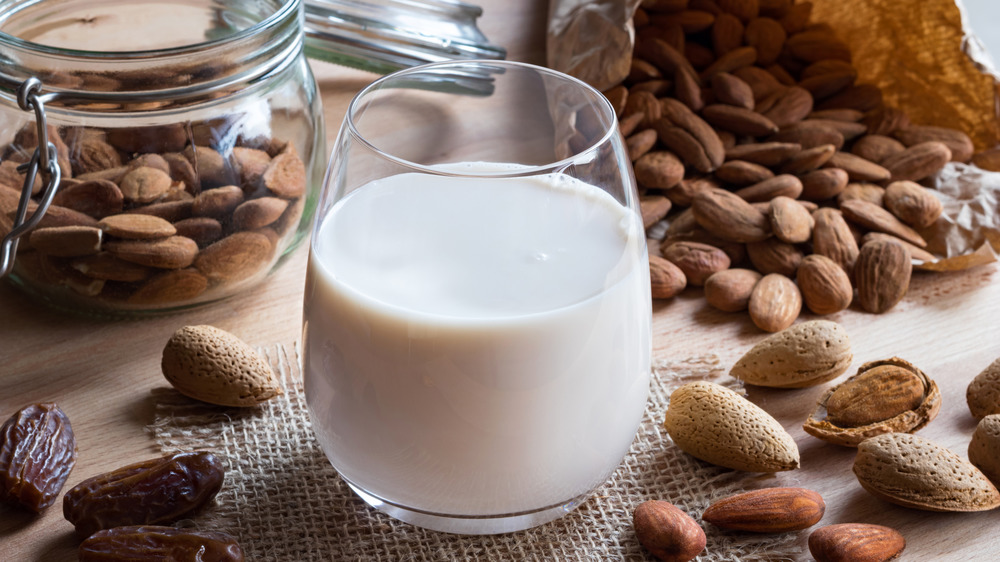The Real Difference Between Almond Milk And Coconut Milk
Got milk? These days, that question isn't as simple as it may sound. After all, not only do you have so many options when it comes to dairy milk (one percent, two percent, whole, skim, etc.) but you have even more options when it comes to non-dairy milk. From almond to soy to coconut to oat, there are plenty of dairy-free milks on the market, whether you're vegan, lactose-intolerant, or simply trying to eat (or drink) a little healthier. But which one is the best? Or more importantly, what makes one different from the others?
Let's take a look at two of the most popular non-dairy milks: almond milk vs. coconut milk. You might see both of them next to each other on the shelf at the grocery store (or on the menu at Starbucks), but you aren't exactly sure which one to choose. That all depends on what nutrients or benefits you're looking to get from your next glass of something cool and creamy.
Coconut milk is higher in fat and calories — but isn't necessarily unhealthier
While the biggest difference between the two milks is obvious (one is made from almonds while the other is made from coconut), there's another major difference that can be found on the nutrition label. Coconut milk tends to have more calories and a higher fat content than its almond counterpart. According to U.S. News, the average eight-ounce serving of original coconut milk has 70 calories and 4.5 grams of fat, while the same serving of almond milk has 60 calories and 2.5 grams of fat. Those numbers are even lower if you buy unsweetened almond milk and can be even higher if you buy coconut milk in its purest form, Spoon University reports.
But just because coconut milk is higher in calories and fat doesn't it make it less healthy, however. Spoon University notes that the saturated fat that's in coconut milk is the type of fatty acid that has a lot of health benefits, from fighting off infections to providing energy to lowering blood pressure and cholesterol. Cheers!

